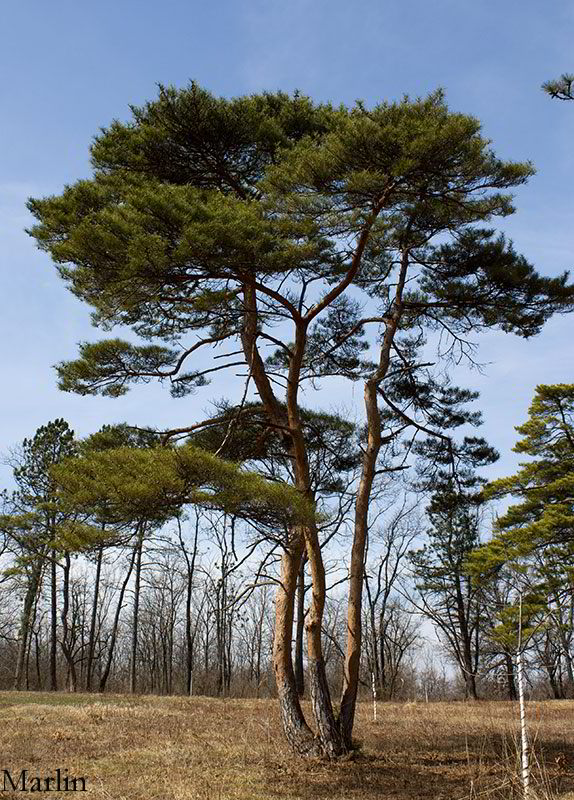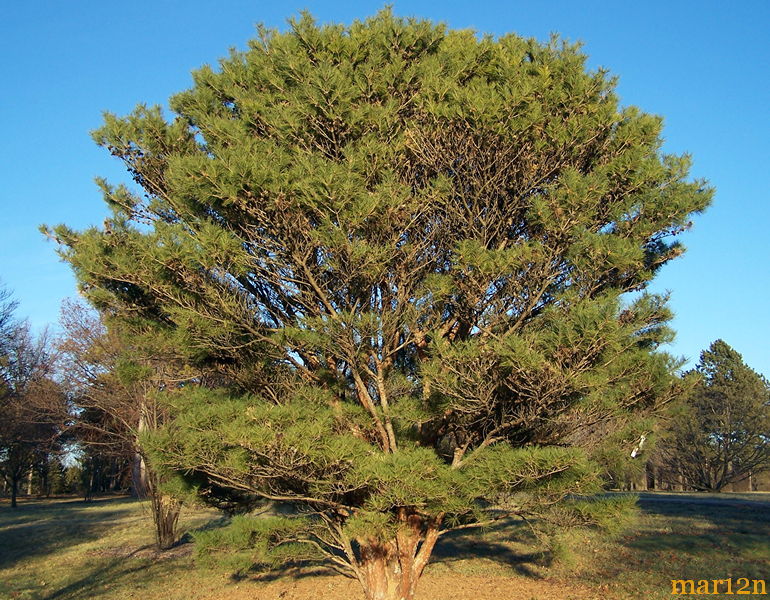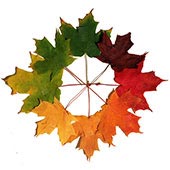Japanese Red Pine (Tanyosho Pine) – Pinus densiflora
Family Pinaceae: Pine, Cedar, Spruce, Fir
Widely cultivated in Japan for timber, this beautiful tree inspires classical Japanese garden design.
Japanese Red Pine can reach 35 meters (115 ft.) Needles are arranged in pairs and remain on the tree for about three years. The bark is unusually striking showing reddish-orange as it exfoliates. The tree prefers a site with full sun and a well-drained, slightly acid soil. Heavy clay soil is not suitable. This cultivar must be grafted for propagation.
 This Japanese red pine was planted in 1929, shortly after the Morton Arboretum‘s founding.
This Japanese red pine was planted in 1929, shortly after the Morton Arboretum‘s founding.
This tree is usually pest-free, with occasional scale, but the list of potential problems is long. Some of its diseases are needle blight and rusts. Canker diseases may cause dieback of landscape pines. Keep trees healthy and prune out the infected branches. Needle cast is common on small trees and plantation or forest trees. Infected needles yellow and fall off.
 Red Pine – Pinus densiflora ‘Umbraculifera’
Red Pine – Pinus densiflora ‘Umbraculifera’
This cultivar of Japanese Red Pine reaches a height of 20 to 30 feet, but grows very slowly and is often seen much smaller. Needles are arranged in pairs and remain on the tree for about three years. A distinguishing feature of this tree is the upright, spreading branching habit which is uncommon in the Pine genus. The bark is unusually striking showing reddish-orange as it exfoliates. The form is compact and the tree stays small making it ideally suited for the residential yard. It can be used as a screen planted in mass or in a row, or alone as a specimen.
Compare to Scots pine (Pinus sylvestris), below
References:
1. Edward F. Gilman and Dennis G. Watson, USDA Forest Service Fact Sheet ST-461 Japanese Red Pine
2. USDA, ARS, National Genetic Resources Program. Germplasm Resources Information Network – (GRIN)
Family Pinaceae: Pine, Cedar, Spruce, Fir
Trees Index | Pine Family | Beech, Oak | Nut Trees | Birch Family | Magnolias
Tree Encyclopedia / North American Insects & Spiders is dedicated to providing family-friendly educational
resources for our friends around the world through large images and macro photographs of flora and fauna.

